 "ttyymmnn" (ttyymmnn)
"ttyymmnn" (ttyymmnn)
05/21/2019 at 12:35 • Filed to: wingspan, Planelopnik, TDIAH
 5
5
 32
32
 "ttyymmnn" (ttyymmnn)
"ttyymmnn" (ttyymmnn)
05/21/2019 at 12:35 • Filed to: wingspan, Planelopnik, TDIAH |  5 5
|  32 32 |
!!! UNKNOWN CONTENT TYPE !!!
Welcome to
This Date in Aviation History
, getting of you caught up on milestones, important historical events and people in aviation from May 18 through May 21.
!!! UNKNOWN CONTENT TYPE !!!
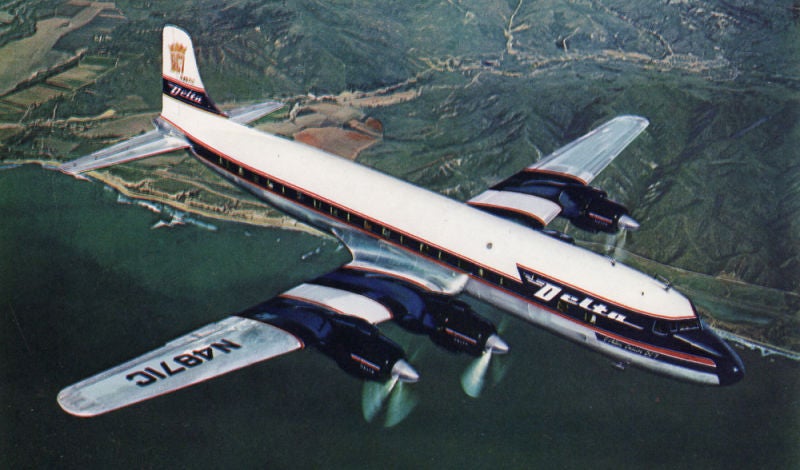
Delta Air Lines Golden Crown Service DC-7 (Author unknown)
May 18, 1953 – The first flight of the Douglas DC-7. Piston-powered aircraft design reached its zenith during WWII, as transport aircraft and long-range bombers helped win the war for the Allies. But with the arrival of the jet engine at the end of the war, it was only a matter of time before jet power supplanted piston power in the airline industry. Still, in the early post-war period, turbojets were relatively new, and airlines were reluctant to plunge headlong into the new technology. The radial engine airliner still had more miles to fly, but for the !!!error: Indecipherable SUB-paragraph formatting!!! , the DC-7 was the end of an era, the final piston-powered airliner produced by the company.
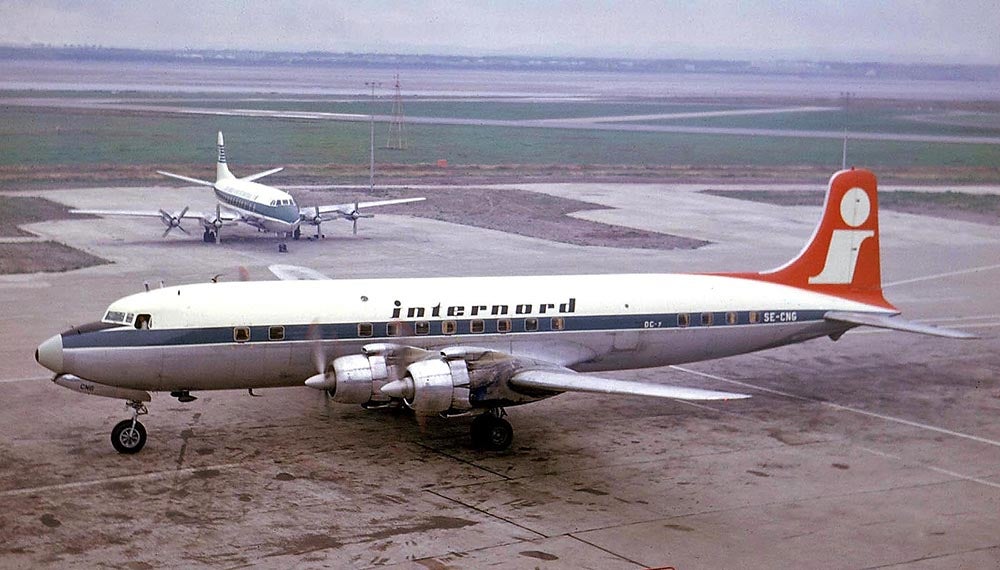 !!!CAPTION ERROR: MAY BE MULTI-LINE OR CONTAIN LINK!!!
!!!CAPTION ERROR: MAY BE MULTI-LINE OR CONTAIN LINK!!!
As the range of the modern airliner increased, companies like American Airlines wanted to provide nonstop service from coast-to-coast. But the airlines ran afoul of Civil Air Regulations that dictated that flight crews could fly no more than eight hours in one 24-hour period, and that was not enough time to complete the trip. To stay within the rules, American needed a faster plane. In order for Douglas to commit to building what might quickly end up being an anachronism (the jet-powered DC-8 took its first flight just five years later), American Airlines president C.R. Smith placed an order for 25 aircraft and agreed to cover the $40 million development cost. Still, building the DC-7 was a relative safe bet for Douglas. Sticking with a trusted engine also meant adhering to the design elements that had served Douglas so well in the past. The company based the DC-7’s wing on that of the !!!error: Indecipherable SUB-paragraph formatting!!! , and the fuselage was essentially that of the !!!error: Indecipherable SUB-paragraph formatting!!! but stretched to accommodate more passengers. The DC-7 was powered by four !!!error: Indecipherable SUB-paragraph formatting!!! twin-row 18-cylinder radial engines, the same engine that was used in a host of other aircraft, including the !!!error: Indecipherable SUB-paragraph formatting!!! and !!!error: Indecipherable SUB-paragraph formatting!!! .
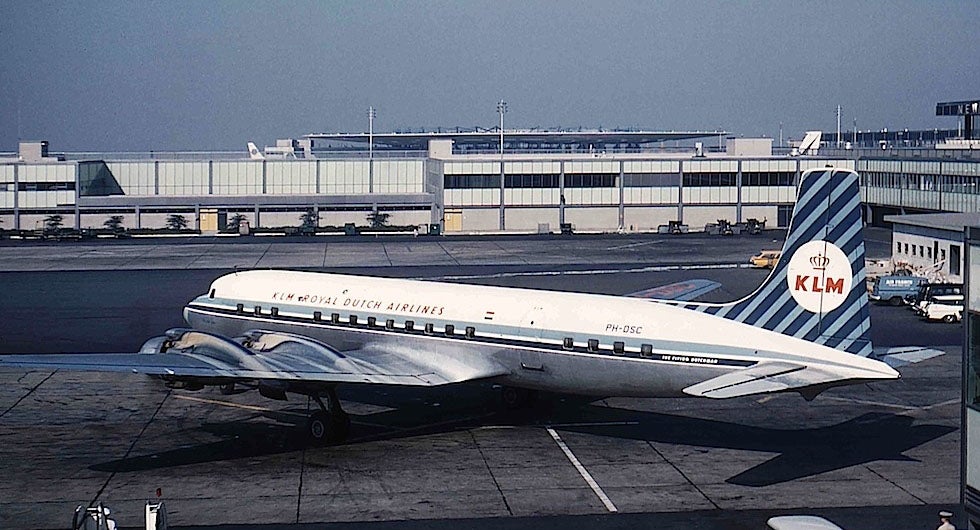 !!!CAPTION ERROR: MAY BE MULTI-LINE OR CONTAIN LINK!!!
!!!CAPTION ERROR: MAY BE MULTI-LINE OR CONTAIN LINK!!!
Just six months after the DC-7's first flight, American Airlines began offering nonstop service flying from the west coast of the United States to the east coast, scheduling the flights for just under the required eight hours, even if actual conditions didn’t always permit that. Weather was always a factor and, despite the mature technology of the radial engines, the DC-7 was plagued with engine reliability problems which caused frequent diversions and delayed flights. Nevertheless, the range and speed of the DC-7 was attractive to the airlines. With the arrival of the DC-7B, which added still more power and range, American carriers were able to schedule east-to-west service from the US to Europe. However, the DC-7 remained unattractive to European airlines because the range was still insufficient for west-to-east transatlantic crossings. Douglas responded with the DC-7C (nicknamed Seven Seas), a variant that moved the engines a bit farther outboard on the wings to reduce cabin noise and provided for yet more fuel. The fuselage was stretched once again to make room for more seats.
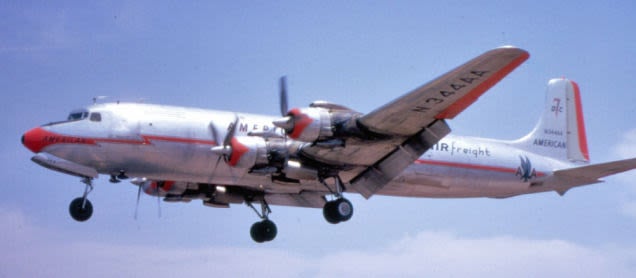 !!!CAPTION ERROR: MAY BE MULTI-LINE OR CONTAIN LINK!!!
!!!CAPTION ERROR: MAY BE MULTI-LINE OR CONTAIN LINK!!!
Despite the transatlantic range and relative reliability of the DC-7C, the days of the piston-powered airliner were rapidly coming to an end. With the advent of the !!!error: Indecipherable SUB-paragraph formatting!!! and Douglas’ own !!!error: Indecipherable SUB-paragraph formatting!!! jetliner, sales of the DC-7 ground to a halt by the end of the 1950s. But the DC-7 still had lots of life in it. Douglas converted the earlier DC-7s and DC-7Cs into the DC-7F, a freighter variant that came with cargo doors added to the front and rear. Douglas produced the DC-7 from 1953-1958 and built 338 aircraft, roughly half the number of DC-6s they produced. Today, the DC-7 is nearly extinct, and only a handful remain airworthy.
!!! UNKNOWN CONTENT TYPE !!!
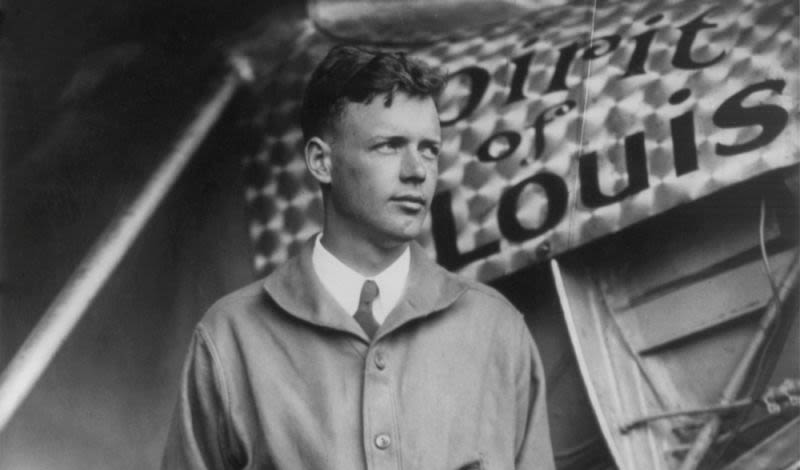 !!!CAPTION ERROR: MAY BE MULTI-LINE OR CONTAIN LINK!!!
!!!CAPTION ERROR: MAY BE MULTI-LINE OR CONTAIN LINK!!!
May 21, 1927 – Charles Lindbergh completes the first solo flight across the Atlantic Ocean.
!!!error: Indecipherable SUB-paragraph formatting!!!
was an English mountaineer who made three unsuccessful attempts to climb Mt. Everest in the early 1920s. When asked why he wanted to risk his life climbing the world’s tallest mountain, Mallory famously replied, “Because it’s there.” Unfortunately for Mallory, his third attempt cost him his life, and his frozen body wasn’t found until 1999. As the history of aviation progressed from the earliest attempts at flight, it was natural that aviators would seek to break through barriers of speed, altitude and distance, and traverse natural boundaries that had never been crossed before. One of the first maritime obstacles was the English Channel, but beyond that, the oceans seemed an insurmountable barrier between continents.
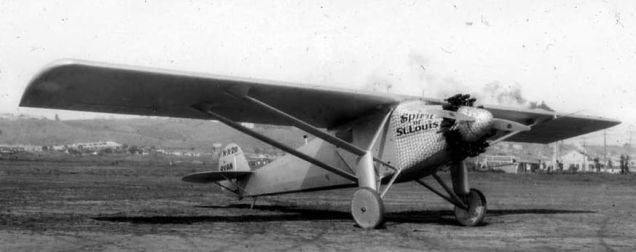
The Ryan NYP, better known as the Spirit of St. Louis (Donald Hall Collection)
By the time Charles Lindbergh decided to have a go at crossing the Atlantic, the need to cross the ocean separating North American from Europe was no longer just because it was there, but because there was money to be made. Though he made an international name for himself with his crossing of the Atlantic, Lindbergh was by no means the first, nor the first to make the trip nonstop. That honor goes to the British duo of !!!error: Indecipherable SUB-paragraph formatting!!! , who made the flight from Newfoundland to Ireland in 1919 flying a !!!error: Indecipherable SUB-paragraph formatting!!! . By the time Lindbergh made his flight eight years later, he was the 19th person to cross the Atlantic. But what made his flight significant was that he did not fly from the closest points between the continents. Instead, he flew between two major cities from which future passenger flights might originate. And he flew alone.
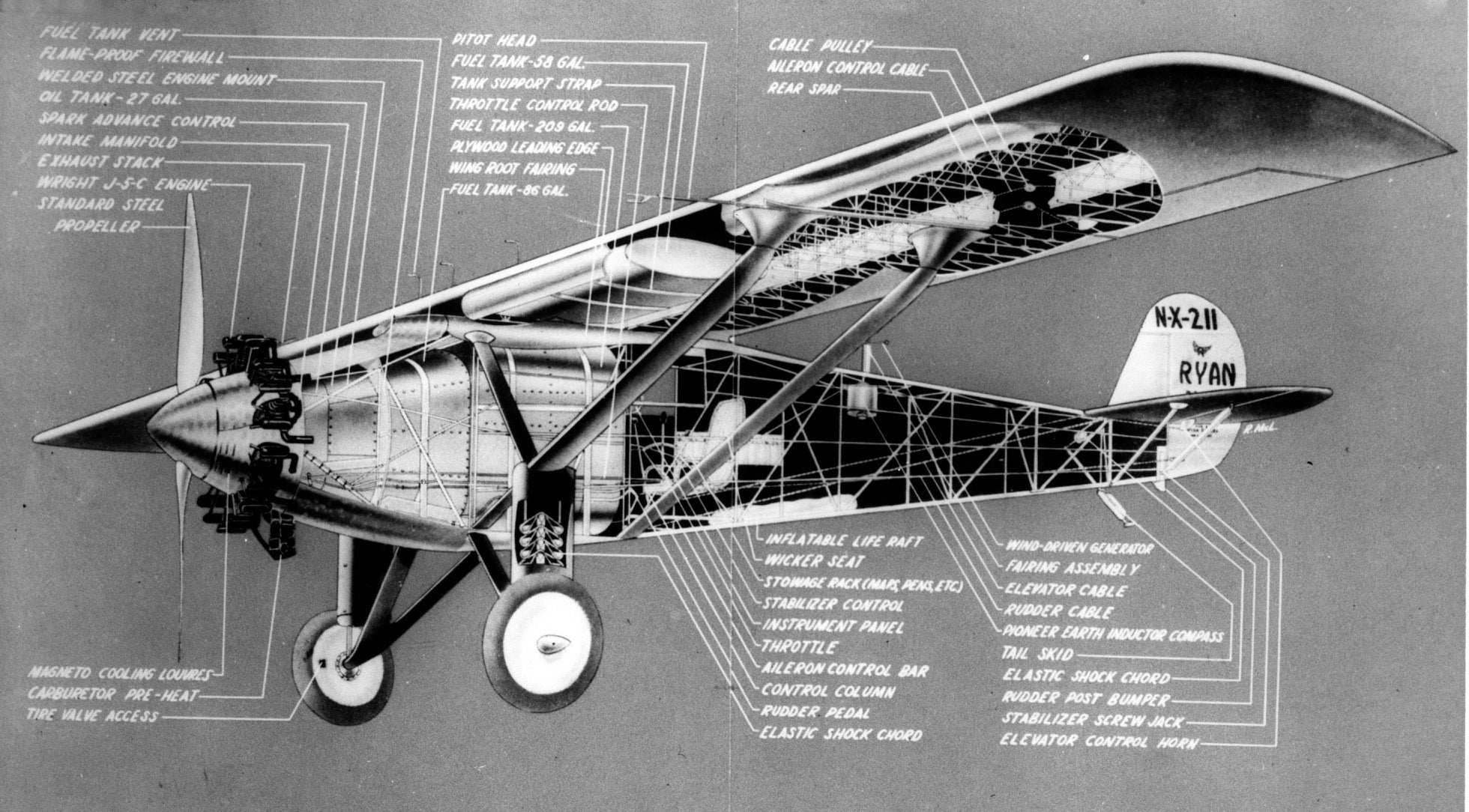 !!!CAPTION ERROR: MAY BE MULTI-LINE OR CONTAIN LINK!!!
!!!CAPTION ERROR: MAY BE MULTI-LINE OR CONTAIN LINK!!!
In the shadow of more famous aviators who tried—or died trying—to claim the the $25,000 !!!error: Indecipherable SUB-paragraph formatting!!! as the first aviator to fly either direction between New York to Paris, Lindbergh was a relative unknown, a civilian air mail pilot who struggled to find financial backing to fund his flight. Starting with $2,000 of his own savings, he eventually secured a loan from investors to purchase a custom built Ryan monoplane, officially known as the NYP (for New York to Paris). The aircraft was christened the !!!error: Indecipherable SUB-paragraph formatting!!! in honor of the bankers and other financial supporters in the Missouri city who bankrolled his endeavor. The NYP was designed by Lindbergh and the Ryan Company’s chief engineer !!!error: Indecipherable SUB-paragraph formatting!!! as a high-wing monoplane with a fabric skin and powered by a !!!error: Indecipherable SUB-paragraph formatting!!! radial engine that gave the aircraft a top speed of 133 mph. A 450-gallon fuel tank sat directly in front of the cockpit, and was separated from the engine by an oil tank. This meant that the Spirit had no front windscreen, and visibility was limited to two side windows. To see forward, Lindbergh had to yaw the aircraft to the left or right. The first flight of the NYP took place on April 28, 1927, just three weeks before Lindbergh’s attempt to cross the Atlantic.
On the morning of May 20, weighed down by 2,700 pounds of fuel, Lindbergh and the Spirit of St. Louis struggled to leave muddy Roosevelt Field on Long Island, only just clearing telephone lines at the end of the field. Once in the air, the early spring weather proved treacherous, and Lindbergh dealt with towering storm clouds and icing, flying as high as 10,000 feet to pass a storm, and sometimes dropping as low as 10 feet above the waves in an effort to rid the wings of ice. Navigating by the stars at night and sometimes dead reckoning, Lindbergh landed at Le Bourget airport in France 33 hours after takeoff. He was greeted by 150,000 French spectators who mobbed him and his aircraft and carried him triumphantly around the field before both he and the Spirit were rescued by French troops. Lindbergh returned to the US as an international hero, and was feted with a ticker-tape parade in New York City. President Calvin Coolidge presented him with both the !!!error: Indecipherable SUB-paragraph formatting!!! and !!!error: Indecipherable SUB-paragraph formatting!!! , and the President of France awarded Lindbergh with the !!!error: Indecipherable SUB-paragraph formatting!!! , France’s highest honor. Lindbergh’s later life would be troubled by the kidnapping and murder of his son, his views on racism, and his opposition to the war in Europe. Nonetheless, he supported the American war effort once the war began, even flying combat missions as a civilian pilot. Towards the end of his life, Lindbergh became a staunch advocate for environmental issues, and died in Hawai’i on August 26, 1974.
!!! UNKNOWN CONTENT TYPE !!!
Short Takeoff
!!! UNKNOWN CONTENT TYPE !!!
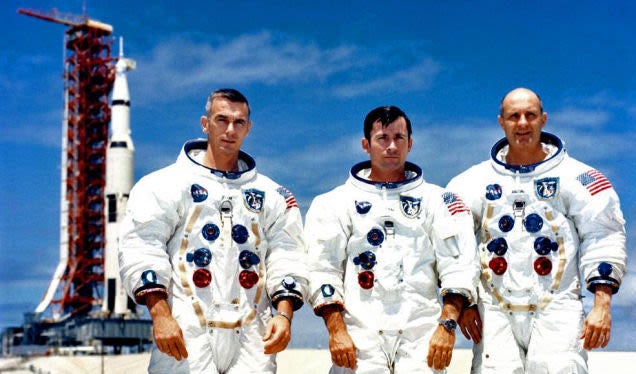
(NASA)
May 18, 1969 – The launch of Apollo 10, the fourth manned mission of the !!!error: Indecipherable SUB-paragraph formatting!!! and the second mission to orbit the Moon. Apollo 10 served as a dress rehearsal for the !!!error: Indecipherable SUB-paragraph formatting!!! flight that successfully landed on the Moon two months later. After establishing orbit 70 miles above the lunar surface, astronaut !!!error: Indecipherable SUB-paragraph formatting!!! , who would later command the first flight of the Space Shuttle, remained in the !!!error: Indecipherable SUB-paragraph formatting!!! while mission commander !!!error: Indecipherable SUB-paragraph formatting!!! and !!!error: Indecipherable SUB-paragraph formatting!!! pilot !!!error: Indecipherable SUB-paragraph formatting!!! descended to within 8.4 nautical miles of the Moon’s surface. On its return from the Moon, Apollo 10 set a world record for the highest speed attained by a manned vehicle, flying at 24,791 mph before successfully splashing down in the Pacific Ocean on May 26.
!!! UNKNOWN CONTENT TYPE !!!
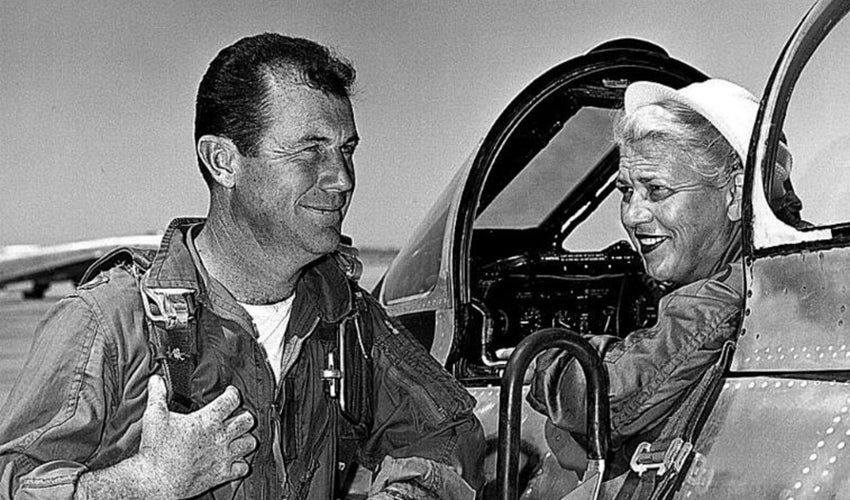
May 18, 1953 – Jacqueline “Jackie” Cochran becomes the first woman to break the sound barrier. A pioneering American aviatrix, Cochran was the only woman to compete for the !!!error: Indecipherable SUB-paragraph formatting!!! , won five !!!error: Indecipherable SUB-paragraph formatting!!! , and still holds more speed, distance and altitude records than any other pilot, male or female. During WWII, Cochran helped establish the !!!error: Indecipherable SUB-paragraph formatting!!! (WASP), in which women pilots were trained to ferry military aircraft in the US to free up male pilots for war duty. After the war, Cochran continued setting records in jet aircraft and became the first woman pilot to break the sound barrier while piloting an RCAF !!!error: Indecipherable SUB-paragraph formatting!!! (the USAF had refused to loan her an aircraft for the attempt). , and set the world speed record for a woman pilot by flying 652 mph, then topped that on June 3 with a speed of 670 mph over a closed course. She was also the first woman to land and take off from an aircraft carrier. Cochran died in 1980 at the age of 74.
!!! UNKNOWN CONTENT TYPE !!!
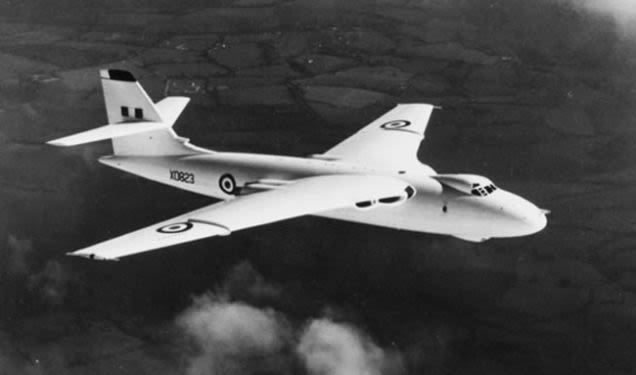
(Author unknown)
May 18, 1951 – The first flight of the Vickers-Armstrong Valiant,
a four-engine, high-altitude nuclear bomber and the first of the so-called V bombers (along with the
!!!error: Indecipherable SUB-paragraph formatting!!!
and the
!!!error: Indecipherable SUB-paragraph formatting!!!
). Designed as a strategic nuclear bomber, the Valiant suffered from fatigue cracks that would also plague the other V bombers, and its service life was relatively short, and it was supplanted by its more advanced successors. Before its retirement, the Valiant carried out nuclear deterrence missions, conventional bombing, and aerial reconnaissance. Some Valiants were also converted as aerial tankers. A total of 107 were built, and the Valiant was formally retired in 1957.
!!! UNKNOWN CONTENT TYPE !!!
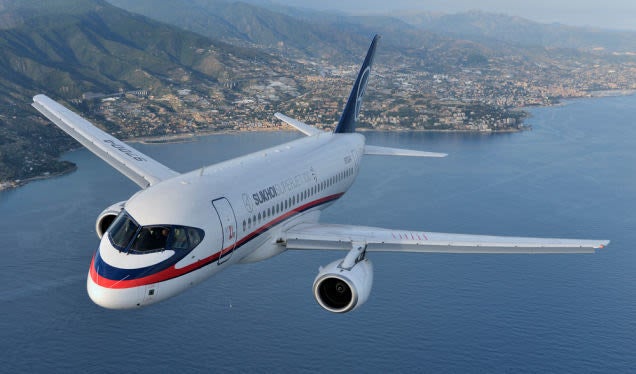 !!!CAPTION ERROR: MAY BE MULTI-LINE OR CONTAIN LINK!!!
!!!CAPTION ERROR: MAY BE MULTI-LINE OR CONTAIN LINK!!!
May 19, 2008 – The first flight of the Sukhoi Superjet 100, a twin-engine, fly-by-wire airliner designed to compete with the !!!error: Indecipherable SUB-paragraph formatting!!! and other similarly-sized aircraft built by Bombardier and Embraer. The Superjet 100 is powered by a pair of !!!error: Indecipherable SUB-paragraph formatting!!! turbofan engines built as a partnership between !!!error: Indecipherable SUB-paragraph formatting!!! of France and !!!error: Indecipherable SUB-paragraph formatting!!! of Russia, and the airliner can carry up to 108 passengers in a dense, single-class configuration. The Superjet made its first revenue flight on April 21, 2011 by Armenian carrier Armavia, though that company went out of business in 2013. As of April 2018, a total of 159 have been built, and work is underway to develop the larger Superjet 130. However, the recent !!!error: Indecipherable SUB-paragraph formatting!!! of a Superset 100 after a suspected lightning strike, as well as continuing problems with reliability and the acquisition of spare parts, have cast doubts on the ultimate success of the airliner.
!!! UNKNOWN CONTENT TYPE !!!
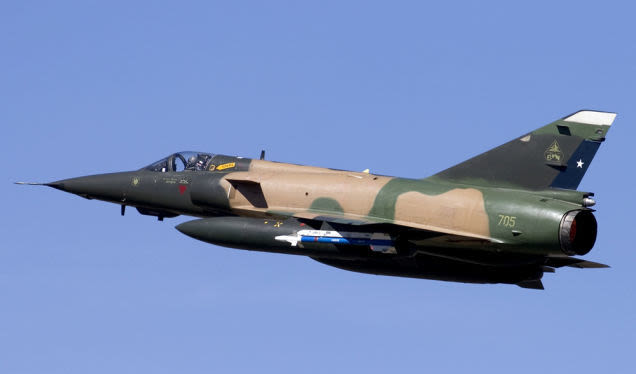 !!!CAPTION ERROR: MAY BE MULTI-LINE OR CONTAIN LINK!!!
!!!CAPTION ERROR: MAY BE MULTI-LINE OR CONTAIN LINK!!!
May 19, 1967 – The first flight of the Dassault Mirage 5, a supersonic, delta wing attack jet that was derived from the !!!error: Indecipherable SUB-paragraph formatting!!! by !!!error: Indecipherable SUB-paragraph formatting!!! . The Mirage 5 was developed by request of the Israeli Air Force, who believed that removing avionics from behind the cockpit would allow for more fuel for long-range attack missions. Due to tensions in the Middle East, the French government refused to deliver the fighters to Israel, though they eventually received them through outside sources. The Mirage 5 was also developed into reconnaissance and two-seat variants, and proved popular with export customers, serving in the air forces of 15 nations. A total of 582 were built, and the Israelis eventually used the Mirage 5 as the basis for the domestically-built !!!error: Indecipherable SUB-paragraph formatting!!! fighter.
!!! UNKNOWN CONTENT TYPE !!!
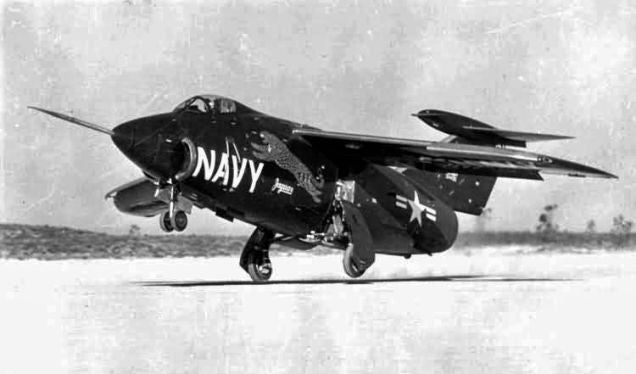
(US Navy)
May 19, 1952 – The first flight of the Grumman XF10F Jaguar, a prototype !!!error: Indecipherable SUB-paragraph formatting!!! fighter developed for the US Navy. As fighter design progressed into the 1950s, the trend was moving towards larger, heavier aircraft with greater speed. While swept wings were good for high speed, they weren’t well-suited to low-speed landings, particularly on the straight decks of the carriers of the day. !!!error: Indecipherable SUB-paragraph formatting!!! devised an aircraft that could straighten the wings for landing and takeoff, then sweep the wings back for high-speed flight. The Jaguar was hampered by unreliable engines and poor flight characteristics, and the development of larger carriers with !!!error: Indecipherable SUB-paragraph formatting!!! eliminated the immediate need for such an aircraft. However, much of what was learned with the Jaguar was later used on the extremely successful !!!error: Indecipherable SUB-paragraph formatting!!! .
!!! UNKNOWN CONTENT TYPE !!!
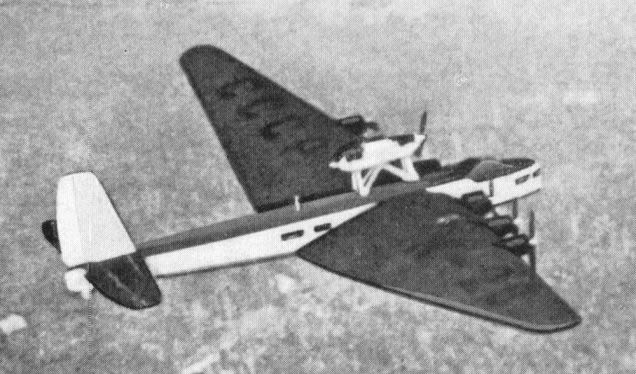
(Author unknown)
May 19, 1934 – The first flight of the Tupolev ANT-20 Maxim Gorky, an eight-engine transport aircraft and one of the largest aircraft of its era. Its wingspan was nearly that of the modern !!!error: Indecipherable SUB-paragraph formatting!!! jumbo jet, and it remained the largest aircraft until the arrival of the !!!error: Indecipherable SUB-paragraph formatting!!! long range bomber in 1941. Named after !!!error: Indecipherable SUB-paragraph formatting!!! , a Russian and Soviet writer and founder of !!!error: Indecipherable SUB-paragraph formatting!!! , the ANT-20 was an all-metal aircraft based on the construction techniques pioneered by !!!error: Indecipherable SUB-paragraph formatting!!! in WWI. It was intended to be used as a Soviet propaganda office outfitted with a powerful radio, printing presses, a library and a movie projector. The first ANT-20 crashed, killing 45 people, so a second aircraft was built with more powerful engines. It, too, crashed when the pilot allowed a passenger to take the controls who then unwittingly disengaged the autopilot. All 36 passengers were killed.
!!! UNKNOWN CONTENT TYPE !!!
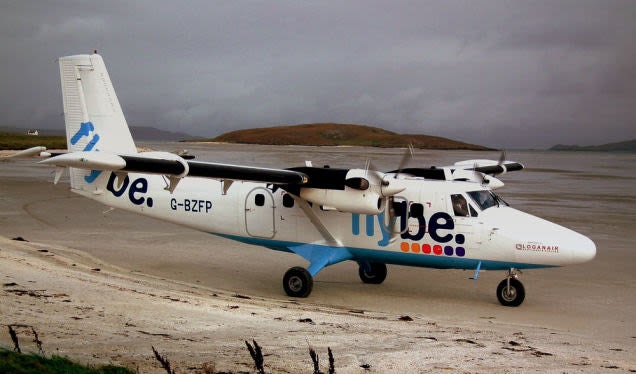 !!!CAPTION ERROR: MAY BE MULTI-LINE OR CONTAIN LINK!!!
!!!CAPTION ERROR: MAY BE MULTI-LINE OR CONTAIN LINK!!!
May 20, 1965 – The first flight of the de Havilland Canada DHC-6 Twin Otter, a 19-seat twin-engine passenger and utility plane developed from the single-engine !!!error: Indecipherable SUB-paragraph formatting!!! . The Twin Otter is powered by a pair of !!!error: Indecipherable SUB-paragraph formatting!!! turboprop engines which gives it significantly greater capability than its single-engine predecessor. The primary design consideration for the Twin Otter was to replicate the Otter’s short takeoff and landing (STOL) characteristics which made them popular with bush pilots and airlines servicing small or remote airstrips. Production aircraft were delivered with either floats, skis, or tricycle landing gear, and Twin Otters remain in service the world over. Production was taken over by !!!error: Indecipherable SUB-paragraph formatting!!! in 2006, and over 900 have been built to date.
!!! UNKNOWN CONTENT TYPE !!!
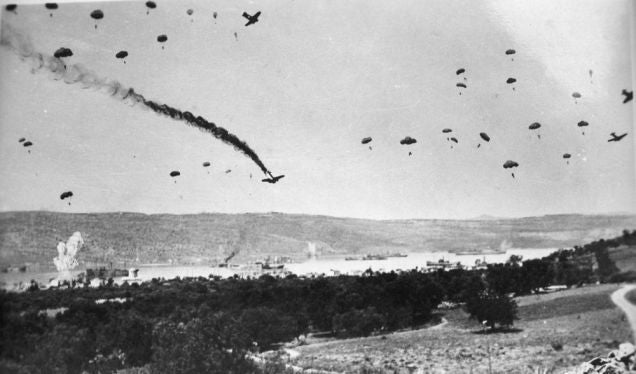
(Author unknown)
May 20, 1941 – Germany invades Crete in Operation Merkur . Beginning in 1940, the British occupied the strategic island of !!!error: Indecipherable SUB-paragraph formatting!!! in the eastern Mediterranean Sea and used it as a base from which to harass German troop movements in the area and to attack Romanian oil fields at Ploiesti. Following the !!!error: Indecipherable SUB-paragraph formatting!!! to Germany in 1941, Hitler set his sights on Crete, believing that taking the island would help protect his forces in the Mediterranean as well his supply of oil from Romania. Operation Merkur ( Mercury ) was carried out by more than 7,000 airborne troops ( !!!error: Indecipherable SUB-paragraph formatting!!! , or paratroops), either parachuting from !!!error: Indecipherable SUB-paragraph formatting!!! transports or arriving in !!!error: Indecipherable SUB-paragraph formatting!!! gliders, marking the first large-scale airborne invasion in military history. Though the invaders were initially slowed by the island’s garrison, German soldiers eventually captured the Maleme airfield, which allowed additional troops to be brought by air. Despite stiff resistance, Crete fell to the Germans on June 1, 1941 after 13 days of fighting.
!!! UNKNOWN CONTENT TYPE !!!
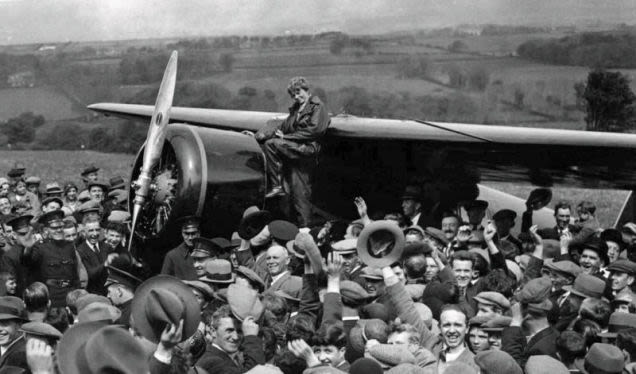
(National Air and Space Museum)
May 20, 1932 – Amelia Earhart becomes the first woman to make a solo flight across the North Atlantic.
Five years after Charles Lindbergh’s famous solo flight across the Atlantic, Earhart took off from Harbour Grace, Newfoundland and, after facing strong northerly winds, icing conditions, and mechanical problems, landed in a pasture at Culmore, Northern Ireland just under 15 hours later. Upon landing, one of the local farmers who witnessed her arrival reportedly asked Earhart, “Have you flown far?” She replied, “From America!” Earhart was awarded the
!!!error: Indecipherable SUB-paragraph formatting!!!
for her achievement, but five years later she was lost at sea, along with her navigator
!!!error: Indecipherable SUB-paragraph formatting!!!
, during their attempt at circumnavigating the globe.
!!! UNKNOWN CONTENT TYPE !!!
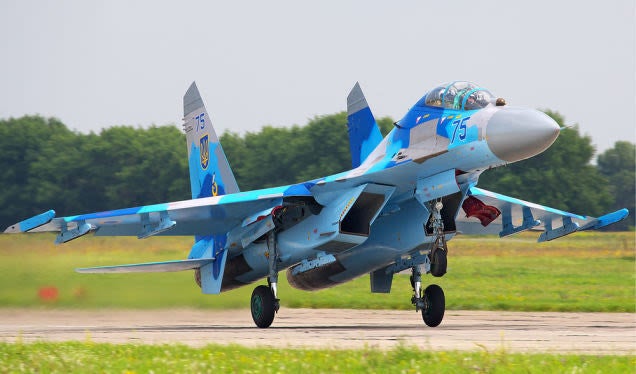 !!!CAPTION ERROR: MAY BE MULTI-LINE OR CONTAIN LINK!!!
!!!CAPTION ERROR: MAY BE MULTI-LINE OR CONTAIN LINK!!!
May 20, 1977 – The first flight of the Sukhoi Su-27,
(NATO reporting name Flanker), a highly maneuverable air superiority fighter designed by Sukhoi as a direct competitor to the American
!!!error: Indecipherable SUB-paragraph formatting!!!
and
!!!error: Indecipherable SUB-paragraph formatting!!!
. The Su-27 entered service in 1985, where its primary mission was the defense of the Soviet Union from American bombers such as the
!!!error: Indecipherable SUB-paragraph formatting!!!
and
!!!error: Indecipherable SUB-paragraph formatting!!!
. Though it was designed initially as an air superiority fighter, the Su-27 has proven to be adaptable to a wide range of missions, and Sukhoi developed numerous variants, including the
!!!error: Indecipherable SUB-paragraph formatting!!!
, a two-seat deep strike aircraft, the
!!!error: Indecipherable SUB-paragraph formatting!!!
naval variant, the
!!!error: Indecipherable SUB-paragraph formatting!!!
strike fighter/bomber and the
!!!error: Indecipherable SUB-paragraph formatting!!!
.
!!! UNKNOWN CONTENT TYPE !!!
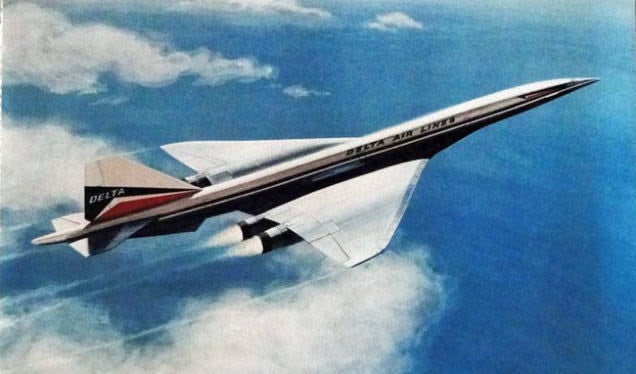
(Author unknown)
May 20, 1971 – The US House of Representatives votes to end government funding of the Boeing 2707 supersonic transport.
In 1961, the US government committed to building its own supersonic transport (SST) to compete with the European
!!!error: Indecipherable SUB-paragraph formatting!!!
and Russian
!!!error: Indecipherable SUB-paragraph formatting!!!
. Coming late to the challenge, the Americans decided to compete by making an SST that was larger than either of its competitors and could accommodate as many as 247 passengers. However, the realities of supersonic transport were hard to conquer, and high fuel consumption in an era when the general public was starting to take a concern in the health of the environment, along with worries over sonic booms and ozone pollution, made SSTs unpopular. By 1971, despite orders for 115 aircraft from 25 airlines, Congress cut funding for the B2707. The two prototypes were never completed, and Boeing was forced to lay off as many as 60,000 employees who had been working on the project.
!!! UNKNOWN CONTENT TYPE !!!
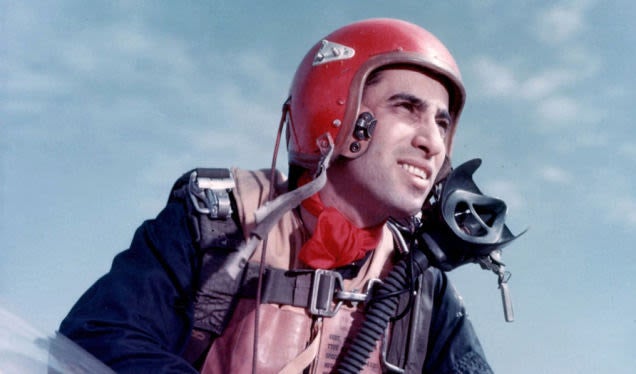
(US Air Force)
May 20, 1951 – US Air Force Captain James Jabara becomes the first American jet fighter ace. Following two combat tours in Europe flying the !!!error: Indecipherable SUB-paragraph formatting!!! during WWII, Jabara transitioned to the the !!!error: Indecipherable SUB-paragraph formatting!!! and continued his service as a fighter pilot during the Korean War. Fighting against Soviet-built !!!error: Indecipherable SUB-paragraph formatting!!! fighters, Jabarra scored his first victory on April 3, 1951, and scored his fifth and sixth victories on the same day a month later. Jabara ended the war with 15 victories, earning him the title of “triple ace.” He was awarded the !!!error: Indecipherable SUB-paragraph formatting!!! , the !!!error: Indecipherable SUB-paragraph formatting!!! , the !!!error: Indecipherable SUB-paragraph formatting!!! , the !!!error: Indecipherable SUB-paragraph formatting!!! , and the !!!error: Indecipherable SUB-paragraph formatting!!! . Jabara went on to various commands after the war, but died along with his daughter in a car crash in 1966. Jabara and his daughter are both interred at !!!error: Indecipherable SUB-paragraph formatting!!! in Washington, DC.
!!! UNKNOWN CONTENT TYPE !!!
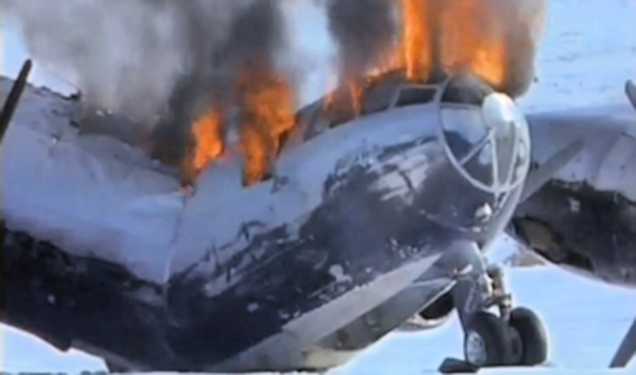 !!!CAPTION ERROR: MAY BE MULTI-LINE OR CONTAIN LINK!!!
!!!CAPTION ERROR: MAY BE MULTI-LINE OR CONTAIN LINK!!!
May 21, 1995 – Boeing B-29 Superfortress
Kee Bird
catches fire and burns during an attempt to take off from Greenland.
On February 21, 1947, a US Army Air Force
!!!error: Indecipherable SUB-paragraph formatting!!!
crash landed in Greenland during a secret Cold War spying mission. The crew was rescued after three days on the Arctic ice, but aircraft, damaged though mostly intact, was left behind. Beginning in 1994, restoration crews dug the plane out of the ice and snow and began working to make theB-29 airworthy so it could be flown to the United States for a full restoration. By the spring of 1995,
Kee Bird
was ready to be flown. As the bomber rolled on takeoff, a fuel tank rigged to the B-29’s auxiliary power unit started leaking, leading to an uncontrollable fire. The crew escaped without serious injury, but
Kee Bird
was completely destroyed, and its
!!!error: Indecipherable SUB-paragraph formatting!!!
still lie on the Greenland ice.
!!! UNKNOWN CONTENT TYPE !!!
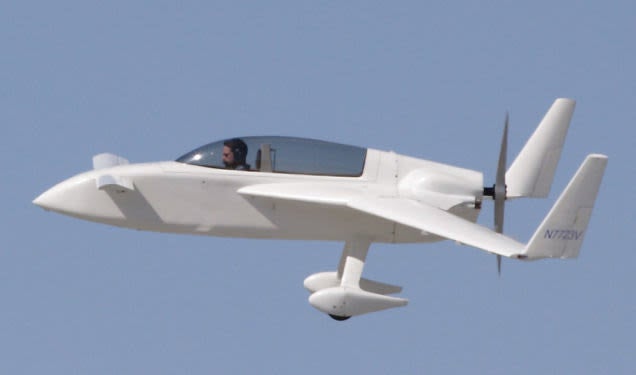 !!!CAPTION ERROR: MAY BE MULTI-LINE OR CONTAIN LINK!!!
!!!CAPTION ERROR: MAY BE MULTI-LINE OR CONTAIN LINK!!!
May 21, 1975 – The first flight of the Rutan VariEze,
a composite, homebuilt aircraft designed by aeronautical engineer
!!!error: Indecipherable SUB-paragraph formatting!!!
that features a forward canard control surface and swept wing based on Rutan’s earlier work with the
!!!error: Indecipherable SUB-paragraph formatting!!!
. Rutan debuted the aircraft at the
!!!error: Indecipherable SUB-paragraph formatting!!!
in Oshkosh, Wisconsin, where he set a distance record for its class of 1,638 miles. Rutan designed the VariEze specifically to help reduce the plane’s susceptibility to spin/departure and stalling when compared to other homebuilt aircraft, and he began selling the designs to aircraft homebuilders in 1976. By the end of 1979, he had sold 4,500 sets of plans. Rutan stopped selling plans for the VariEze in 1985 to focus on his company
!!!error: Indecipherable SUB-paragraph formatting!!!
.
!!! UNKNOWN CONTENT TYPE !!!
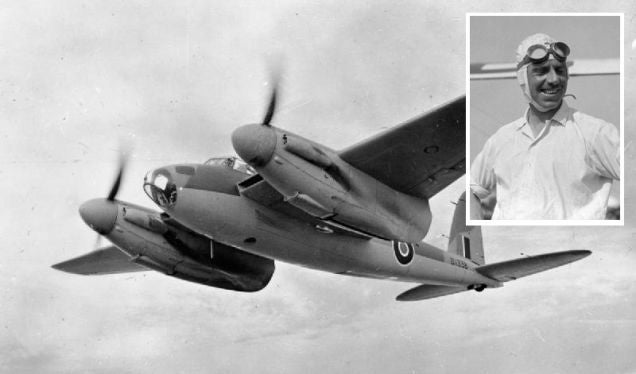
(Australian Government; UK Government)
May 21, 1985 – The death of Sir Geoffrey de Havilland. Born on July 27, 1882, de Havilland was a British aviation pioneer and aeronautical engineer wjp was responsible for some of the preeminent military aircraft of WWII. De Havilland built his first aircraft in 1910, and formed the !!!error: Indecipherable SUB-paragraph formatting!!! in 192o. His company produced the !!!error: Indecipherable SUB-paragraph formatting!!! multi-role fighter/bomber during the war and, as part of the Brabazon Committee, de Havilland oversaw the production of the !!!error: Indecipherable SUB-paragraph formatting!!! , the world’s first jet-powered airliner. De Havilland remained in control of his company until it was bought by !!!error: Indecipherable SUB-paragraph formatting!!! in 1960, and he died at the age of 82.
!!! UNKNOWN CONTENT TYPE !!!
Connecting Flights
!!! UNKNOWN CONTENT TYPE !!!
!!! UNKNOWN CONTENT TYPE !!!
!!! UNKNOWN CONTENT TYPE !!!
!!! UNKNOWN CONTENT TYPE !!!
!!! UNKNOWN CONTENT TYPE !!!
If you enjoy these Aviation History posts, please let me know in the comments. And if you missed any of the past articles, you can find them all at
!!!error: Indecipherable SUB-paragraph formatting!!!
. You can also find more stories about aviation, aviators and airplane oddities at
!!!error: Indecipherable SUB-paragraph formatting!!!
.
!!! UNKNOWN CONTENT TYPE !!!
 Ash78, voting early and often
> ttyymmnn
Ash78, voting early and often
> ttyymmnn
05/21/2019 at 13:02 |
|
As the range of the modern airliner increased, companies like American Airlines wanted to provide nonstop service from coast-to-coast. But the airlines ran afoul of Civil Air Regulations that dictated that flight crews could fly no more than eight hours in one 24-hour period, and that was not enough time to complete the trip. To stay within the rules, American needed a faster plane.
This is such an important point — because piston aircraft are a lot more efficient than jets and can easily manage a longer range. But from the passengers’ POV, they’re loud and slow. And from the crew’s POV, you just need too many peo
ple as you noted above
.
I like to imagine an alternative world where we knew about climate change during the beginning of the jet era. Would our path have been different and favored the more efficient, slower planes?
 Full of the sound of the Gran Fury, signifying nothing.
> ttyymmnn
Full of the sound of the Gran Fury, signifying nothing.
> ttyymmnn
05/21/2019 at 13:03 |
|
I was born and raised in Southern California. My father, an aviation junkie like me, named me after the manufacturer of the Spirit of St Louis, San Diego-based Ryan Aircraft. In a strange twist of fate, I ended up working in the commercial aviation field and wound up in, of all places, St Louis. It’s amazing how circular life can be...
 TheRealBicycleBuck
> Full of the sound of the Gran Fury, signifying nothing.
TheRealBicycleBuck
> Full of the sound of the Gran Fury, signifying nothing.
05/21/2019 at 13:06 |
|
So, your real name is Aircraft? That’s unfortunate....
 Full of the sound of the Gran Fury, signifying nothing.
> TheRealBicycleBuck
Full of the sound of the Gran Fury, signifying nothing.
> TheRealBicycleBuck
05/21/2019 at 13:08 |
|
No, that’s just my middle name :P
 RamblinRover Luxury-Yacht
> ttyymmnn
RamblinRover Luxury-Yacht
> ttyymmnn
05/21/2019 at 13:08 |
|
Following the
fall of Greece
to Germany in 1941, Hitler set his sights on Crete, believing that
taking the island would help protect his forces in the Mediterranean
The battle of Greece, summary: England borrowed some dozens of worn out garbage A-10 cruiser tanks and nearly-as-garbage Mark VI light tanks from the North Africa campaign, shipped them via cruiser to Greece, the Germans responded in great force but
delayed themselves enough that the British mostly withdrew instead of having to fight for any
amount of delay, and nearly every tank broke down. Misallocation of air power resulted in the loss of several British ships. Huzzah.
As to Crete, Rommel would also
have liked Crete to help protect his forces.
Narrator voice: taking Crete did *not* help protect his forces
 MattHurting
> ttyymmnn
MattHurting
> ttyymmnn
05/21/2019 at 13:11 |
|
My dad was on the USS Princeton when they recovered the Apollo 10 capsule from the Pacific on May 26, 1969.
 TheRealBicycleBuck
> ttyymmnn
TheRealBicycleBuck
> ttyymmnn
05/21/2019 at 13:12 |
|
Let’s see, three thoughts come to mind. First, t he Spirit’s cruising speed was about the same as a Piper Cherokee 180 - slow . Not as slow as the 140 I fly, but slow nonetheless!
Second, I watched a documentary on the Kee Bird . They said an auxiliary generator fell over because of the rough surface they were trying to taxi over , thus causing the fire. Not that it really matters, but I wonder what actually happened.
Third, a friend of mine owned an EZ, but I never got a chance to ride in it. Now he has a Cessna 210 and a KitFox on floats. I really, really want to fly in that KitFox!
 Highlander-Datsuns are Forever
> ttyymmnn
Highlander-Datsuns are Forever
> ttyymmnn
05/21/2019 at 13:24 |
|
I for one am great full to travel at 500-600 mph vs 250-350 mph while in the air. It doesn’t make much difference for short hops but anything approaching 1,000 miles it makes a big difference. I still like the Q-400 (aka Dash-8) but I’d hate to be on that plane longer than 1.5-2 hrs.
 phenotyp
> ttyymmnn
phenotyp
> ttyymmnn
05/21/2019 at 13:44 |
|
Nice job throwing in the VariEZ!
I saw one flying around last month, and tried to explain why it was cool, but... I don’t think they got it.
 shop-teacher
> ttyymmnn
shop-teacher
> ttyymmnn
05/21/2019 at 14:08 |
|
I’ve got a question for you. I found out recently that I will be teaching a class called “Flight and Space” next year. They’re going to give me a curriculum for the class, but I have no idea how good it will be, or what it will consist of (I’ll find out mid-July when I go to training). Would you mind if I use these as a class resource? If I did that, I would copy/paste the information into a google doc. I’m not going to send my students to Oppo. I would happily credit you for the information if you wish. If you don’t want me to use this , just say the word. No hard feelings or anything.
The subject is a bit outside of my com fort zone. I had a brief period from about 4th-8 th grade that I was into aviation, but have paid roughly zero attention to it since then. As soon as the closed Glenview Naval Airbase (I lived directly under the flight path into and out of the base), I lost interest.
 ttyymmnn
> Ash78, voting early and often
ttyymmnn
> Ash78, voting early and often
05/21/2019 at 14:56 |
|
I like to imagine an alternative world where we knew about climate change during the beginning of the jet era. Would our path have been different and favored the more efficient, slower planes?
It’s an interesting question, but it also supposes that we would care about climate change. Right now, those in a position to do something about it are the most strident deniers.
 Chariotoflove
> ttyymmnn
Chariotoflove
> ttyymmnn
05/21/2019 at 14:57 |
|
How frustrated do you think the Apollo 10 crew was to be so close to the lunar surface and knowing they had to turn back? I’m guessing more than a bit, even though they were professionals and knew their jobs.
 ttyymmnn
> MattHurting
ttyymmnn
> MattHurting
05/21/2019 at 14:57 |
|
Neat!
 ttyymmnn
> TheRealBicycleBuck
ttyymmnn
> TheRealBicycleBuck
05/21/2019 at 15:04 |
|
Second, I watched a documentary on the Kee Bird . They said an auxiliary generator fell over because of the rough surface they were trying to taxi over, thus causing the fire. Not that it really matters, but I wonder what actually happened.
I’m currently reading The Wright Brothers by David McCullough. Fantastic book. I just finished the part where Wilbur triumphantly displayed the Flyer to the French, and about how meticulous he was in his preparation, doing everything on his own time, in his own way, ignoring any pressures from the press, public, or patrons to go flying. He wrote to Orville, who was getting ready to demonstrate the Flyer for the US Army, and exhorted him to be equally careful, not to feel any pressure to fly if he wasn’t ready. In contrast to Wilbur’s spectacular success, Orville’s demonstration ended in a crash that killed Thomas Selfridge (the first person to die in a plane crash) and nearly killed himself.
I wonder if there were pressures to get Kee Bird into the air. I’m sure that every day on the ice was costing a ton of money. Perhaps corners were cut, perhaps somebody looked at a dodgy set up and said, “It will be fine.” Either way, it’s a shame the plane was lost, but fortunate that nobody was hurt.
 ttyymmnn
> Highlander-Datsuns are Forever
ttyymmnn
> Highlander-Datsuns are Forever
05/21/2019 at 15:06 |
|
Fortunately, we have a choice! But at the time, it was still a vast improvement. In 1929, you could go from coast to coast in a mix of Fort Trimotor and rail. It took 51 hours and cost almost $4000 in today’s money. But it was still a huge improvement over any other means of travel.
 ttyymmnn
> phenotyp
ttyymmnn
> phenotyp
05/21/2019 at 15:07 |
|
It’s an unassuming aircraft, but it revolutionized the homebuilt industry. I, for one, would never fly in a plane that I built myself.
 RamblinRover Luxury-Yacht
> ttyymmnn
RamblinRover Luxury-Yacht
> ttyymmnn
05/21/2019 at 15:10 |
|
Someone bought my father a year’s subscription to
Kitplanes
magazine back in the day. I used to pore over it. Of course, the one particular plane that captured my imagination back then turned out to be a real widowmaker...
 ttyymmnn
> shop-teacher
ttyymmnn
> shop-teacher
05/21/2019 at 15:14 |
|
Of course, you are absolutely welcome to use these as a resource. There’s a link at the end of each post that goes to all of them (stick to the most recent years, as the older articles are still there but the newer ones got updates and rewrites) . And if you have any questions, or need some angles or perspective (history never takes place in a vacuum; it’s all about context ), I’d be happy to help if I can .
NASA has entire websites dedicated to education, and of course, it’s all free since it’s from the gubmint. You might find some useful things there. I have used some of these resources to help educate myself about certain aspects of flight and spaceflight, and it’s all approachable and (pretty) easy to understand.
https://www.nasa.gov/stem/foreducators
https://www.nasa.gov/offices/education/centers/marshall/classroom/index.html
https://www.nasa.gov/education/materials/
If you need more, just google “NASA educational materials”
 ttyymmnn
> Chariotoflove
ttyymmnn
> Chariotoflove
05/21/2019 at 15:28 |
|
As you say, they knew their jobs. As for the crew, two of the Apollo 10 astronauts did eventually get to the Moon
Thomas Stafford , Apollo 10 Commander, never made it back to the Moon, but later he commanded the Apollo-Soyuz Test Project , the first joint U.S.- Soviet space mission, and flew in three different types of spacecraft.
John Young , Command Module Pilot, was the first person to fly solo around the Moon while the other crewmen of Apollo 10 flew the lander to within feet of the Moon’s surface. Young set foot on the surface of the Moon on Apollo 16, and drove the Lunar Rover. He’s one of only three people to fly to the Moon twice. He commanded two launches of the Space Shuttle, including program’s maiden flight into space, and served as Chief of the Astronaut Office from 1974 to 1987. He was America’s longest-serving Astronaut.
Eugene Cernan , the Lunar Module Pilot on Apollo 10, returned to the Moon as Commander on Apollo 17 and was the 11th and last man to walk on the lunar surface (the last so far; the next will likely be Chinese at this rate). It was the last of three trips to space for Cernan.
 ttyymmnn
> RamblinRover Luxury-Yacht
ttyymmnn
> RamblinRover Luxury-Yacht
05/21/2019 at 15:30 |
|
This one?
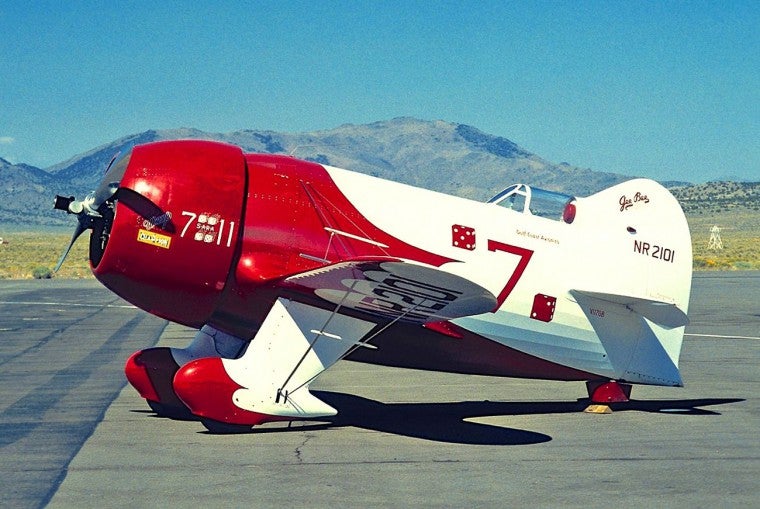
Seriously, though, which one? John Denver was flying a Vari Eze when he crashed and died.
 Chariotoflove
> ttyymmnn
Chariotoflove
> ttyymmnn
05/21/2019 at 15:32 |
|
Oh certainly. One of the things I like about the program was that it seems to have “made it up” to the early crews by letting them get there later. That may not be how they thought of it, but it’s how I like to.
Still, would have been nice to be first. These were talented and ambitious men.
 ttyymmnn
> Chariotoflove
ttyymmnn
> Chariotoflove
05/21/2019 at 15:37 |
|
These were talented and ambitious men
They were, but they also seemed to understand that was all being done for a higher purpose, and not for self-aggrandizement. The Mercury astronauts were all allowed to name their capsules, and John Glenn named his Friendship 7 in reference to the teamwork involved and the camaraderie of of the Mercury 7 astronauts.
 RamblinRover Luxury-Yacht
> ttyymmnn
RamblinRover Luxury-Yacht
> ttyymmnn
05/21/2019 at 15:43 |
|
The Adventure Air line of amphibians, as
here
.
 ttyymmnn
> RamblinRover Luxury-Yacht
ttyymmnn
> RamblinRover Luxury-Yacht
05/21/2019 at 15:48 |
|
The NTSB report concluded that the airplane suffered the loss of the horizontal stabilizer, elevator, rudder, both wings, and a portion of the vertical stabilizer.
Well, there’s your problem.

 shop-teacher
> ttyymmnn
shop-teacher
> ttyymmnn
05/21/2019 at 16:01 |
|
Cool! Thanks!
 RamblinRover Luxury-Yacht
> ttyymmnn
RamblinRover Luxury-Yacht
> ttyymmnn
05/21/2019 at 16:03 |
|
Yes, quite. “Plane suffered instant failure to exist” is not confidence-inspiring. Even if one was to be buying the plans and not the kit, and have some level of quality control.
 BaconSandwich is tasty.
> RamblinRover Luxury-Yacht
BaconSandwich is tasty.
> RamblinRover Luxury-Yacht
05/21/2019 at 16:10 |
|
“Rapid unscheduled disassembly" :P
 ttyymmnn
> shop-teacher
ttyymmnn
> shop-teacher
05/21/2019 at 16:11 |
|
My pleasure.
 You can tell a Finn but you can't tell him much
> Chariotoflove
You can tell a Finn but you can't tell him much
> Chariotoflove
05/21/2019 at 16:38 |
|
NASA purposely didn’t put enough fuel in the LEM to allow the Apollo 10 astronauts to land on the on the moon.
From Wikipedia : Craig Nelson wrote in his book Rocket Men that NASA took special precaution to ensure Stafford and Cernan would not attempt to make the first landing. Nelson quoted Cernan as saying “A lot of people thought about the kind of people we were: ‘ Don’t give those guys an opportunity to land, ‘cause they might!’ So the ascent module, the part we lifted off the lunar surface with, was short-fueled.
 Chariotoflove
> You can tell a Finn but you can't tell him much
Chariotoflove
> You can tell a Finn but you can't tell him much
05/21/2019 at 16:40 |
|
Knowing how professional these guys were, I like to think Cernan was joking, but I’m also betting there had to have been a tiny little voice in the back of their heads that was saying, “wouldn’t it be nice?...”
 shop-teacher
> ttyymmnn
shop-teacher
> ttyymmnn
05/21/2019 at 16:46 |
|
You’re a good man, Charlie Brown :)
 You can tell a Finn but you can't tell him much
> Chariotoflove
You can tell a Finn but you can't tell him much
> Chariotoflove
05/23/2019 at 09:22 |
|
I’m sure it was short fueled, but most likely simply due to the fact that it is very expensive to launch mass off the earth . The less weight they sent the less fuel they needed for the launch vehicle .